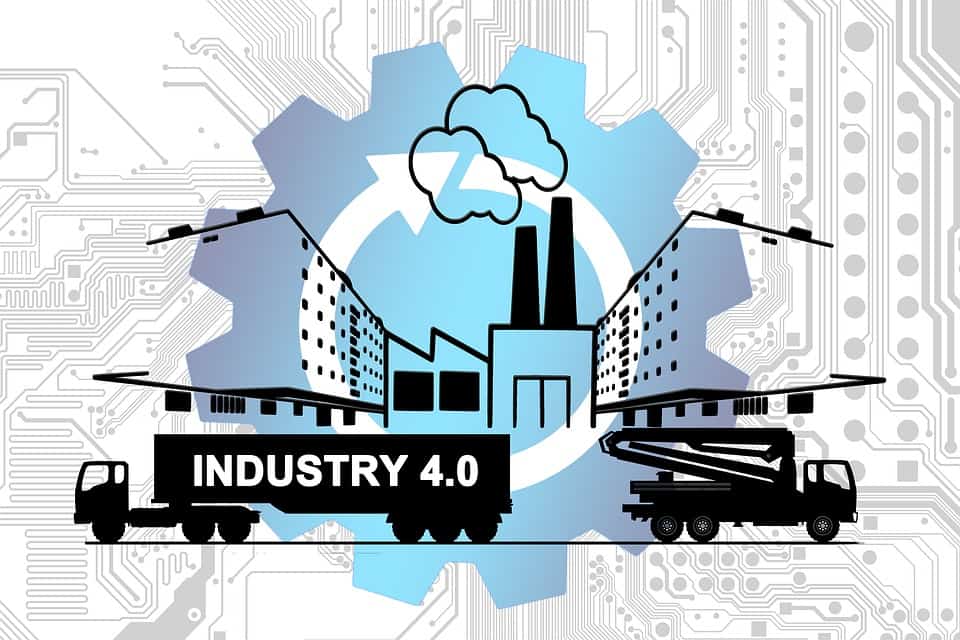
26 Jan The Future of Industry Is in Smart Buildings
Smart devices surround us more and more every day. The science fiction homes of our childhoods are now a realistic possibility. Today, sensors and machine learning software built can be built into everything from the walls of the house to the washer, dryer, and refrigerator. These examples of IoT maximize comfort from the touch of a button, and learn what the occupant prefers. But, what does this technology mean for industrial and commercial buildings? How is the IoT poised to change the way businesses run?
What is the Industrial Internet of Things?
Let’s start with a clear understanding of IoT (Internet of Things). The definition is simpler than you may think. Your smartphone is an illustration. Once our phones began to be internet-connected, it enabled access to music, videos, etc., without the phone needing to store all that information. The “Thing” in this example is the phone. If a Thing has internet on it, it is engaged in the Internet of Things if the internet enables it to achieve any of the following:
- collect and send information
- receive and act on information
- both
Improvements from Smart Building Technology
The IoT industry projects commercial buildings as one of the main areas fueling growth in IoT. The internet is valuable to enhance the control and management of buildings for several reasons.
Occupant Comfort and Security
IoT can enhance occupant comfort. Examples of where IoT will be used for comfort include smart vending machines and medical devices. Or, think about humidity and temperature sensors that communicate changes or building maintenance needs. As another illustration, with enhanced data-gathering and resultant actions, security systems will increase security for occupants and their companies.
Industrial Safety
Sensors and automation in manufacturing not only manage safety concerns, but also save costs and create efficiency. There are computer vision and building IoT solutions for safety for:
- materials
- processes and production
- fire
- electrical
- environment
Preventative Maintenance
The larger and more complex the facility, the greater the likelihood that breaks in equipment will go undetected. This can decrease efficiency, increase costs, and cause hassle. Broken equipment can also introduce safety or health concerns. Anyone managing maintenance of buildings knows that reactive maintenance can account for almost an entire work week. Inevitably, facilities managers then de-prioritize preventative maintenance. Imagine if you received a dashboard of the status of every mechanical and electrical piece of equipment in your facility, breaks, and preventative maintenance schedules. You could prioritize and delegate resources so much more efficiently. Better yet, imagine if half of those items fixed without your intervention? This is all possible with IoT.
Cost Management
Once you understand how iot can enhance buildings, it becomes clear how it helps to keep costs down. In addition to the above, smart building technology saves on things like energy consumption and avoidable equipment repair or replacement. Warehouses can save using IoT for asset tracking, order fulfillment, and inventory.
Obstacles to Smart Building Creation
Of course all of this is predicated on a powerful and fast internet connection. This can be a problem for rural areas. In addition, Internet of Things requires items in the building be fitted with things like fiber optic sensing systems, or otherwise wired into a network that can actively communicate. The countries that have invested most in the infrastructure required to implement IoT are the U.S., Switzerland, Netherlands, and the Nordic countries. In addition to lack of infrastructure based on geography, other barriers to Smart Building implementation include:
- lack of IoT standards
- companies don’t know where to start, or what areas will create the most efficiency
- cost
- absent cybersecurity solutions
Where to Begin
The best way to begin with IoT is to look for efficiencies it can create immediately and with no recurring costs. Do the math to be sure your investment will exceed anticipated savings over time. Watch major vendors in the industry and what they are up to. Start small, with one area, and learn as you go.

